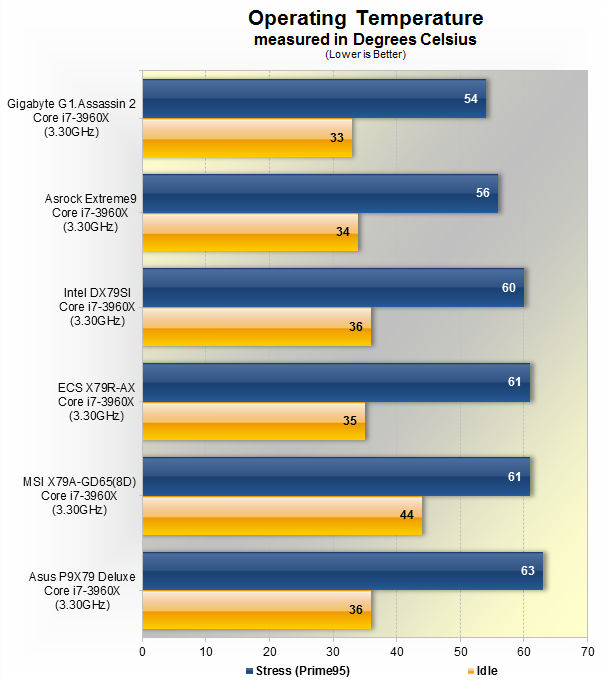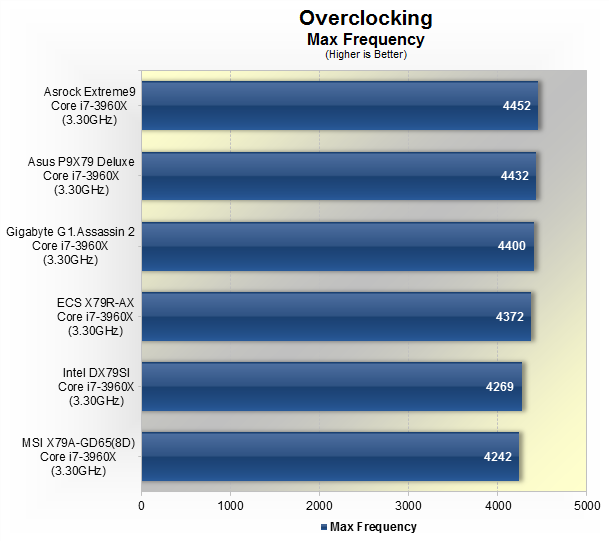Power, Temps & Overclocking

Easily our most surprising results yet, the power consumption figures were shocking. Previous motherboard roundups had seen a maximum of 15-20 watts separating the conservative boards to the most power hungry. However when testing the X79 boards we are seeing a variation of up to 74 watts under load!
The Intel DX79SI and MSI X79A-GD65(8D) both consumed ~220 watts under load and just 86 watts at idle. However those look tame in comparison to the Asus and ECS boards, both of which consumed over 290 watts under load. There could be various explanations for this, the few different hardware components completing the boards' entire feature set, as well as different power phase configurations. But rest assured, for the purpose of testing each product was installed with the same hardware using similar BIOS settings.

There was also a large difference between operating temperatures of each board's VRM. While the Gigabyte G1.Assassin 2 worked at just 54 degrees under load, the Asus P9X79 Deluxe was much hotter at 63 degrees. That said most of the X79 boards operated at around 60 degrees under load, and only the Gigabyte and Asrock boards went below that mark.

When overclocking we used multiple and base clock settings to determine the maximum operating frequency. None of the boards were stable with a base clock higher than 134MHz. The Asrock X79 Extreme9 produced our highest overclock with the Core i7-3960X processor reaching 4452MHz. Next best was Asus with the P9X79 Deluxe which hit a similar frequency at 4432MHz.
The weaker performers were the MSI X79A-GD65(8D) at just 4242MHz, and the Intel DX79SI at 4269MHz. The rest of the X79 boards were able to exceed 4.3GHz as the ECS X79R-AX achieved a maximum overclocked of 4372MHz.
